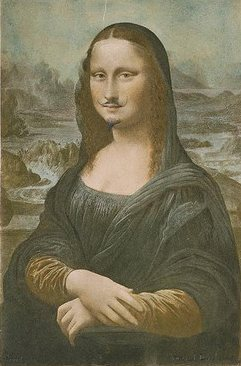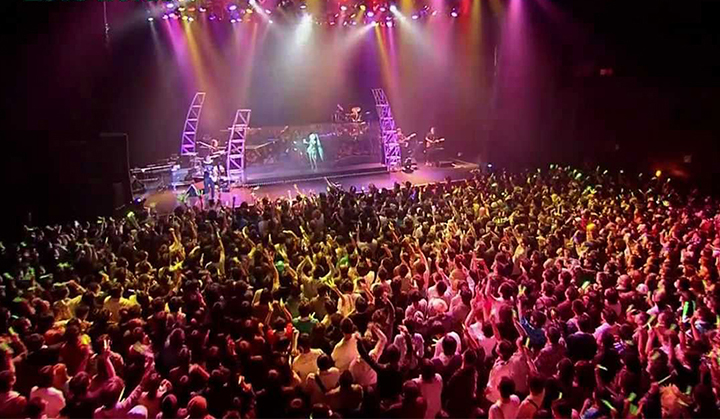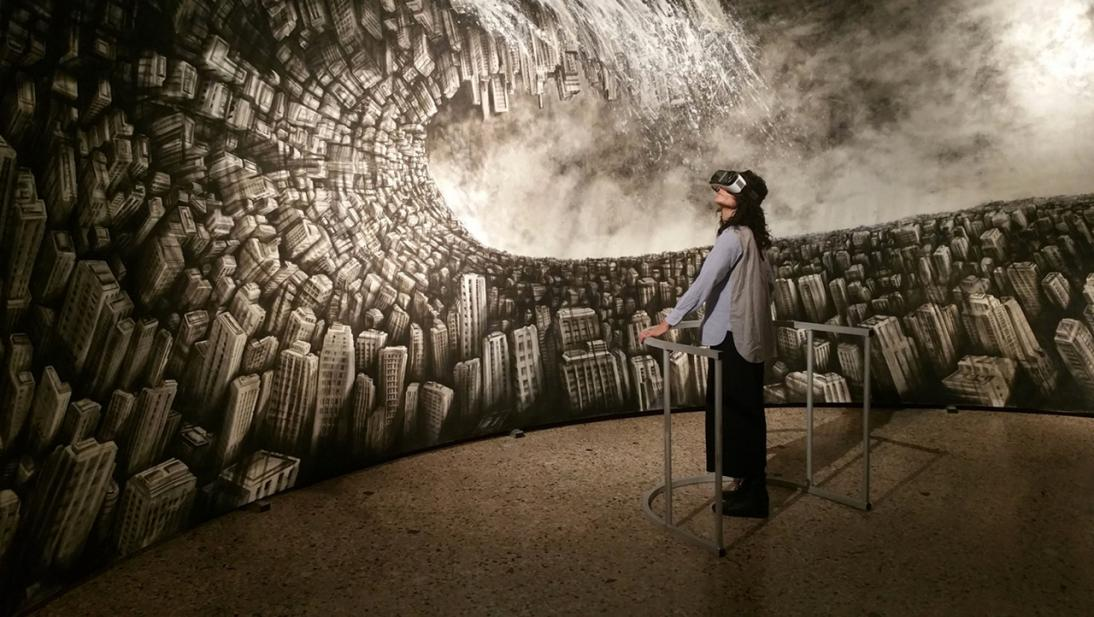Truth and Simulacra (I) - Dr. Shan Yu
2022-02-10
The concept of "virtual reality" can be traced back to 1935. American science fiction writer Stanley G.Weinbaum first mentioned "virtual reality glasses" in his work "A Martian Odyssey", and discussed the plot of the story based on this clue. In less than a century, "virtual reality" from the concept into reality, its technology and application path also presents a trend of increasingly mature. After a long period of technology research and development and product development, virtual reality is not only an advanced technology, but also an art form. Virtual reality technology has been widely applied in the field of cultural and creative industries, such as music, animation, film and television, etc. This has once again verified the development of science and technology of art, art performance of science and technology integration trend. Virtual reality art is the perfect integration of science and technology and art, which means the interaction and integration of contemporary science and technology and aesthetic culture.
The progress of digital art has changed the way people think about art and strengthened the creative skills of creators. Since 2015, virtual reality technology has formed a trend of large-scale popularization, and with its distinctive characteristics of immersion, interaction and imagination, it has been favored and applied by various contemporary industries. Based on the form of modern virtual reality art, this paper discusses three characteristics of art works endowed by virtual reality technology, that is, non-material aesthetic characteristics caused by virtual characteristics, super-real aesthetic characteristics caused by immersion characteristics and nonlinear aesthetic characteristics caused by interactive characteristics.
I. Virtual and Realistic -- Digital art forms with aesthetic characteristics:
"In the 19th century, various machine tools expanded the 'realm of sight' and turned visual experience into a commodity." For example, the popularization of printing accelerated the formation of the newspaper model, telegraph and telephone improved the efficiency of communication between people, railway and steam locomotive changed the concept of distance, and photography not only changed the forms of public and family records, but also enriched people's visual experience. Therefore, from the law of history, virtual reality tools will inevitably become a new generation of visual AIDS sought after by the world.
From the perspective of the history of artistic expression, in 1919, French artist Margot Duchamp added a moustache with a different style in pencil to the full-color print of Mona Lisa (Figure 1). This absurd and unruly art form broke the inherent boundaries of art, so it triggered a debate on the authenticity of art in the art industry. "True and false" can also be understood as "virtual and reality". Although duchamp's work is not a beautiful creation, he questions the boundaries and nature of art, forcing us to look at fine art in a new way. By the 1830s, surrealism was born as a pursuit of irrational truth, the idea that objective, rational society was an artificial illusion of unreality. In the 1850s, Pop Art absorbed the creative form of Dadaism, closely linked Art with commodity consumption in life, secularized Art works and sanctified commodity consumption. Then there is Post Modernism. As society advances, this wave is also influenced by technology. As a media tool, virtual reality makes the presentation of art more three-dimensional and diversified, and provides a more immersive, real and interactive user experience. First of all, virtual reality art has changed the audience's traditional way of appreciation and completed the transition from watching to immersion in the user's viewing habit. At the same time, virtual reality has also brought an impact on the narrative language of art, and the intervention of virtual reality technology has changed the way of artistic expression from simulation to hyperreality. The artistic representation of this period was almost more virtual than real. Until now, the mode of using various high and new technologies to present artistic works has been developed more mature. To some extent, virtual reality art also reflects the art form of intelligent society and virtualization phenomenon, and has gradually evolved into an art presentation mode with aesthetic characteristics.


Figure 1 Duchamp's L.H.O.O.Q and Da Vinci's Mona Lisa
One, fictitious: immaterial aesthetic
The 21st century is in the trend of post-modern art. Virtual reality art is a kind of art that completely depends on digital presentation technically. Although it has no actual volume and quality, it can surpass reality and bring endless imagination to people spiritually. However, art is a kind of expression that emphasizes intuition rather than physical facts, so virtual reality technology endows art with non-material aesthetic characteristics.
1. New media art different from traditional art
Regis Debray has divided human society into three parts from the perspective of culture and media, namely the age of handwriting, the age of printing and reproduction and the age of entertainment. In other words, people's access to information has shifted from reading and writing to audio-visual. However, the virtual environment experienced by the audience in virtual reality art is very different from the environment in real life. Everything they feel is imaginary. Although the visual effect brought by virtual reality is real and credible, this kind of fictitious aesthetic experience is a kind of creative imagination thinking on consciousness rather than real existence. Therefore, this form of fictional artistic expression can also be regarded as an immaterial aesthetic experience.
Virtual space created by virtual reality technology has changed the concept of space and time in the real world. By virtual reality technology to create the artistic atmosphere, artists can be more clever to blend in his mental state into work, breakthrough the limitation of physical or geographically, the phenomenon of different time and space through technology integration and connection, allow viewers to experience real life impossible scenarios, the content of the virtual reality and art also therefore becomes rich. The global popularity of Japanese virtual idol "Hatsune Miku" indicates that non-material aesthetic types may surpass the trend of traditional artistic aesthetic types. Hatsune Miku is a 16-year-old girl with a double ponytail created by Japanese company Crypyon Future Media. The fictional character, who can sing and dance, has released more than 20,000 songs in her second year on the Internet and has become one of the most watched trendmakers of the New Star era, with fans even imitating Hatsune Miku's dancing and singing on the Internet. In March 2010, Hatsune Miku staged the world's first concert featuring virtual characters in 3D holographic projection (see Figure 2). The appearance of Hatsune Miku confirms people's recognition of virtual idols and pursuit of non-materialistic aesthetics. With the change of The Times, the art types of entity existence can not completely meet the aesthetic needs of all audiences, but the virtual reality art form with non-material aesthetic characteristics is coming into people's vision. Hatsune Miku's success has brought more possibilities for the fusion of technology and art. With the popularization of virtual technology, people's demand for non-material aesthetic experience will also increase day by day.

Figure 2 Hatsune Miku VR concert scene
2. Immaterial aesthetic features provide new ideas for artistic creation
The digital, dematerialized virtual reality technology brings people a new idea of creation and appreciation of beauty. When we appreciate contemporary new media art, we will find that from the technical level, virtual reality technology is still in the embryonic state and not mature; However, from the perspective of creative ideas, this technology, which has not yet been widely used, will hopefully overturn the creative thinking of the future of art. This truth can be illustrated by the example of 3D printer. As early as 2010, 3D printing technology completely overturned the previous design process with the automatic material printing method, causing a great uproar in the art design circle. In the past, design samples followed the production sequence from design to molding to factory manufacturing. Now, a 3D printer can capture most of the process. Advances in technology have revolutionized the way art is made.

Figure 3 Viewers are viewing Hyperplanes of Simultaneity virtual art works
And the development of virtual reality technology will also deepen the innovation of artistic creation. Just as the relationship between gods and mortals as well as myths and folk was the most basic theme of artists during the period of religious domination around the Renaissance, the relationship between real life and virtual fantasy is also becoming the subject of many artists' research. Take The Lumen Prize, which showcases and honors The best in digital art. The 2013 Lumen Prize awarded The gold medal to Italian artist Fabio Giampietro, who is keen to experiment with virtual reality technology. He uses Samsung GEAR VR for his art, and he wants to incorporate elements of vertigo and immersion into his art. The intense immersion makes the viewer feel as if they are immersed in the canvas. In the eyes of the author, Italian artist Fabio, this series of reactions from the audience also become a kind of alternative performance art (see Figure 3).
In this way, through virtual reality technology, the creation of art in the future will no longer be limited to materialized canvas or pen and paper, and VR technology will lead artists and audiences into a wider art field.
